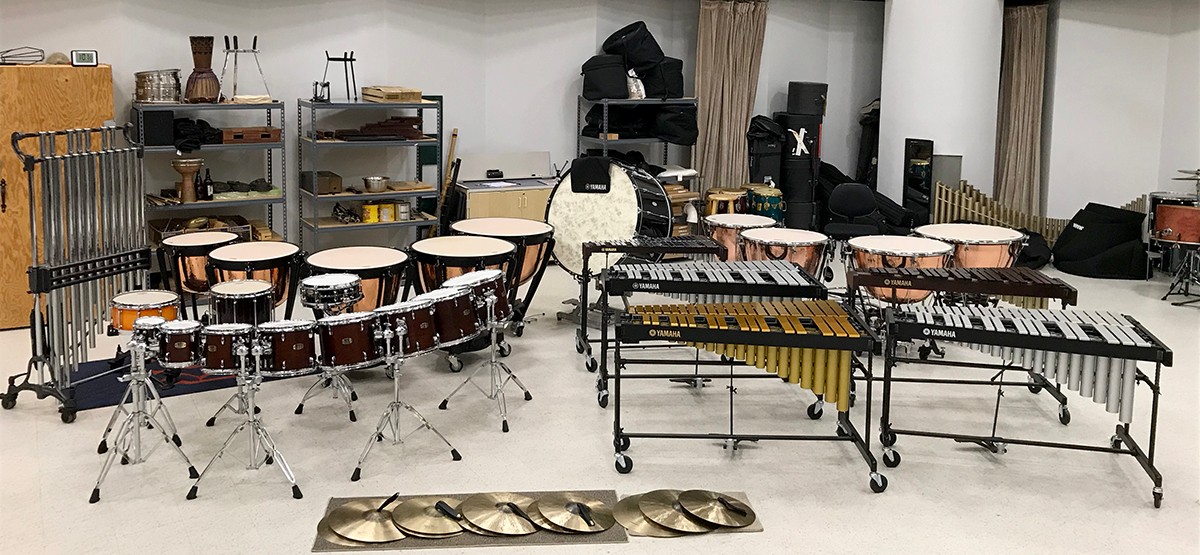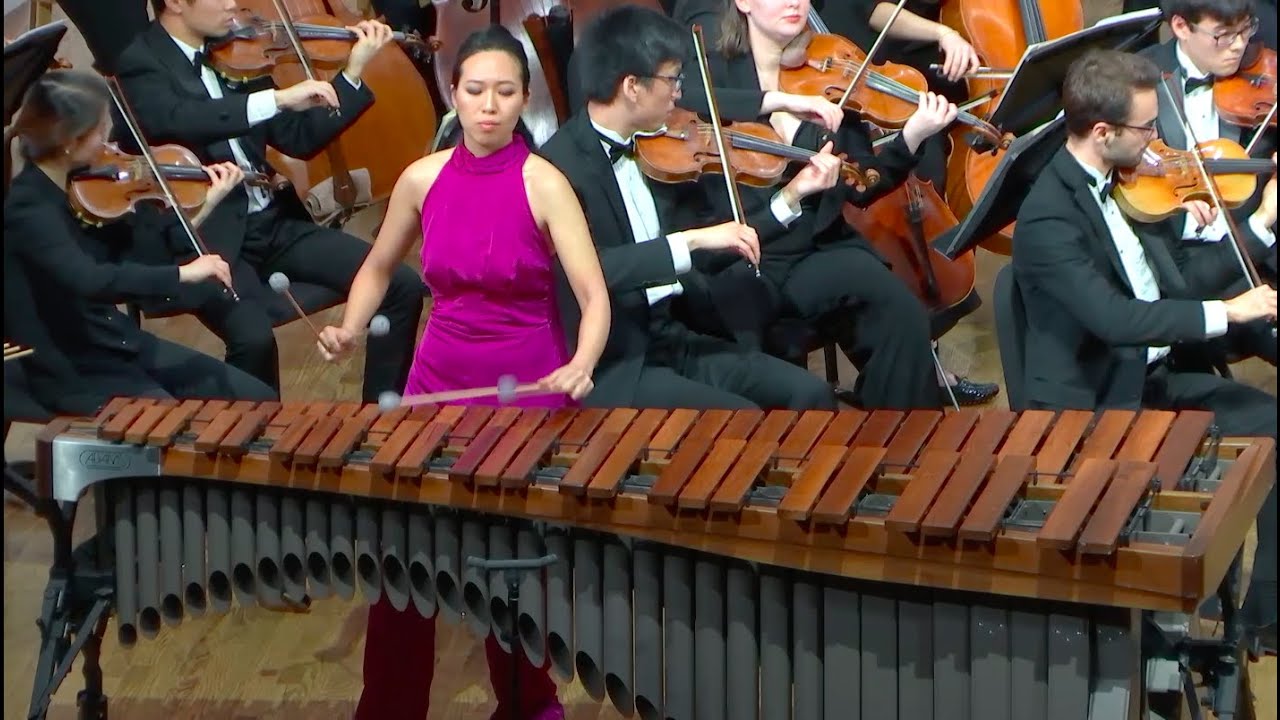Home>Instruments>Percussion Instruments>Percussion Instruments Are Organized Into Two Groups Based On What


Percussion Instruments
Percussion Instruments Are Organized Into Two Groups Based On What
Published: January 16, 2024
Discover the two main groups of percussion instruments, categorized based on their unique characteristics. Explore the world of percussion instruments and their diverse sounds.
(Many of the links in this article redirect to a specific reviewed product. Your purchase of these products through affiliate links helps to generate commission for AudioLover.com, at no extra cost. Learn more)
Table of Contents
Introduction
Percussion instruments are a vital part of music across various genres and cultures. Whether it’s the rhythmic beats of a drum or the delicate chimes of a xylophone, percussion instruments add depth, texture, and excitement to musical compositions. They are the heartbeat of any ensemble, providing a solid foundation for other instruments to build upon.
When it comes to percussion instruments, they can be broadly categorized into two groups: pitched and unpitched. This classification is based on the sound produced by the instrument and the way it is organized within a musical composition.
Pitched percussion instruments are those that produce definite pitches or musical notes when struck. These instruments are often tuned to specific pitches and can play melodic lines in addition to providing rhythmic accompaniment. Examples of pitched percussion instruments include the marimba, vibraphone, xylophone, glockenspiel, and timpani.
On the other hand, unpitched percussion instruments produce indefinite pitches or non-musical sounds. These instruments are primarily used to provide rhythm and texture, rather than specific pitches. Examples of unpitched percussion instruments include drums, cymbals, tambourines, triangles, and shakers.
Each group of instruments has its own unique characteristics, playing techniques, and roles within different musical contexts. Understanding the distinctions between pitched and unpitched percussion instruments can help musicians and enthusiasts appreciate their individual contributions to music.
Group 1: Pitched Percussion Instruments
Pitched percussion instruments are those that produce definite pitches or musical notes when struck. They are often constructed with specific pitches in mind and can be arranged in a keyboard-like layout or individual instruments tuned to specific pitches.
One of the most recognizable examples of a pitched percussion instrument is the marimba. This instrument consists of a series of wooden bars that are struck with mallets to produce sound. The marimba is known for its warm and resonant tones, and it can be played both melodically and rhythmically.
Another popular member of the pitched percussion family is the xylophone. Similar to the marimba, the xylophone features wooden bars that are struck with mallets. However, the xylophone is often smaller and produces a brighter and sharper sound. It is commonly used in orchestras and marching bands.
The vibraphone is a unique pitched percussion instrument that includes metal bars and a set of resonators beneath each bar. When the metal bars are struck, the vibrations travel through the resonators, creating a distinct vibrato effect. The vibraphone is capable of producing a wide range of tones and is often used in jazz and contemporary music.
The glockenspiel is a smaller version of the xylophone, featuring metal bars that are struck with mallets. It produces a bright and bell-like sound, adding sparkle and clarity to musical arrangements. The glockenspiel is commonly used in orchestras, marching bands, and educational settings.
Lastly, the timpani, also known as kettle drums, are large bowl-shaped drums that can be tuned to specific pitches. They are played with mallets and provide the foundation of the percussion section in orchestras. The timpani is capable of producing a wide range of expressive tones, from deep and resonant to sharp and piercing.
Pitched percussion instruments offer both melodic and rhythmic possibilities in musical compositions. Musicians who specialize in these instruments have the ability to play intricate melodies, harmonies, and chords, adding a rich and captivating element to any performance.
Group 2: Unpitched Percussion Instruments
Unlike pitched percussion instruments, unpitched percussion instruments do not produce definite pitches or musical notes when struck. Instead, they create non-musical sounds that add texture, rhythm, and color to musical compositions.
One of the most iconic members of the unpitched percussion family is the drum. Drums come in various shapes and sizes, including the bass drum, snare drum, and tom-toms. They are played with drumsticks, hands, or mallets, and they produce a wide range of tonal qualities and rhythmic patterns. Drums provide a solid foundation and drive the beat in many musical genres, from rock and pop to jazz and world music.
Cymbals are another essential component of unpitched percussion. They come in pairs and are made of metal alloys that produce shimmering and crashing sounds when struck together or individually. Cymbals add accents, dynamics, and dramatic effects to musical compositions and are commonly used in orchestras, bands, and drum sets.
Tambourines are handheld instruments featuring a circular frame with small metal jingles that create a rattling sound when shaken or struck. They are versatile instruments that can be used to play rhythmic patterns, add accents, or create a jingling effect. Tambourines are commonly found in folk, pop, and world music genres.
The triangle is a simple yet distinctive percussion instrument made of a metal rod bent into a triangular shape. It produces a clear and high-pitched tone when struck with a metal beater. The triangle is often used to provide accents or highlight specific moments in musical compositions.
Shakers, also known as maracas, are handheld instruments that produce a shaking or rattling sound. They consist of a hollow body filled with beads or small objects and are typically shaken to create a rhythmic pattern or a steady pulse. Shakers are commonly found in Latin American, Caribbean, and folk music genres.
Other examples of unpitched percussion instruments include the cowbell, woodblock, guiro, and claves. Each instrument offers unique sounds, textures, and playing techniques, contributing to the overall rhythmic complexity and depth in music.
Unpitched percussion instruments play a crucial role in driving the rhythm, adding accents, and providing sonic interest in musical compositions. They offer versatility and a vast range of tonal possibilities, allowing musicians to explore and create rhythmic patterns that enhance the overall musical experience.
Conclusion
Percussion instruments are the heartbeat of music, providing rhythm, texture, and excitement to compositions across various genres and cultures. They can be categorized into two groups: pitched and unpitched.
Pitched percussion instruments produce definite pitches or musical notes when struck. They include instruments like the marimba, vibraphone, xylophone, glockenspiel, and timpani. These instruments offer melodic possibilities along with rhythmic accompaniment, adding depth and richness to musical arrangements.
Unpitched percussion instruments, on the other hand, produce non-musical sounds when struck. They include instruments like drums, cymbals, tambourines, triangles, shakers, and more. These instruments contribute to the rhythm, texture, and color of music, providing accents and dynamics that enhance the overall musical experience.
Both groups of percussion instruments are essential and play unique roles in musical compositions. Pitched percussion instruments offer the ability to play melodies, harmonies, and chords, while unpitched percussion instruments drive the beat, add accents, and provide rhythmic interest.
Understanding the distinctions between pitched and unpitched percussion instruments allows musicians and enthusiasts to appreciate the individual contributions of each instrument. It also provides a foundation for exploring and creating diverse rhythmic patterns and musical compositions.
So, whether it’s the melodic tones of a marimba or the driving rhythm of a drum, percussion instruments hold a special place in the world of music. They bring life, energy, and excitement to performances, captivating listeners and creating a truly immersive musical experience.
Next time you listen to your favorite song, take a moment to appreciate the percussion instruments that add that extra layer of magic to the music.











